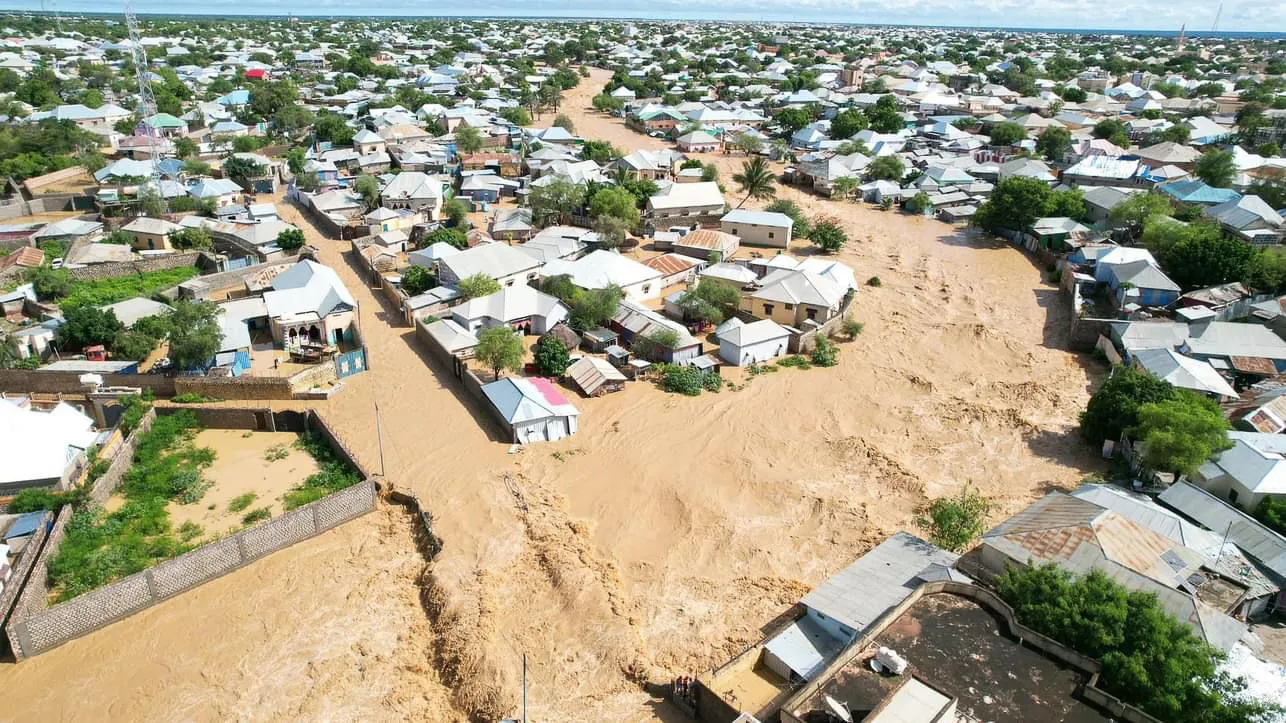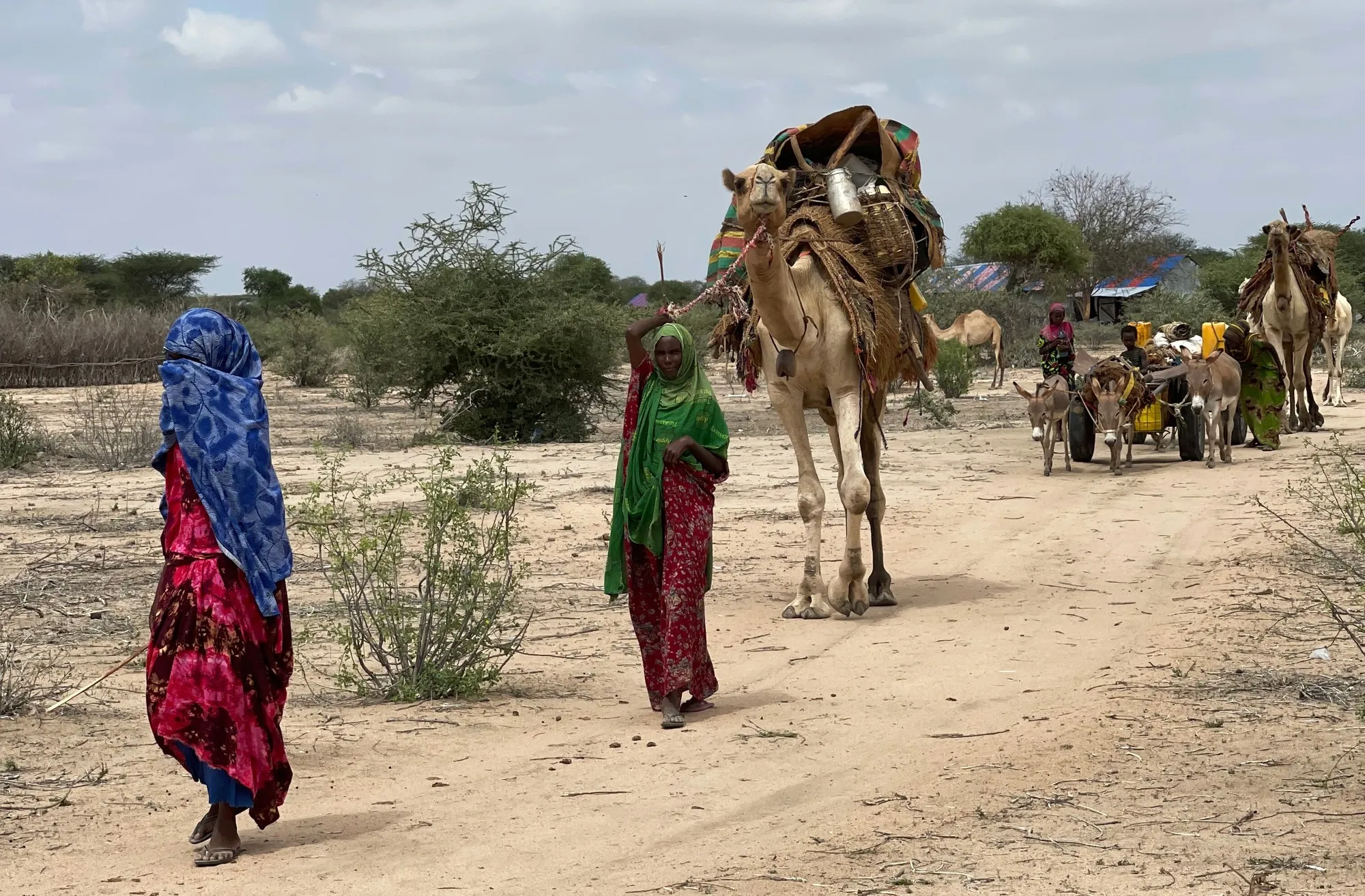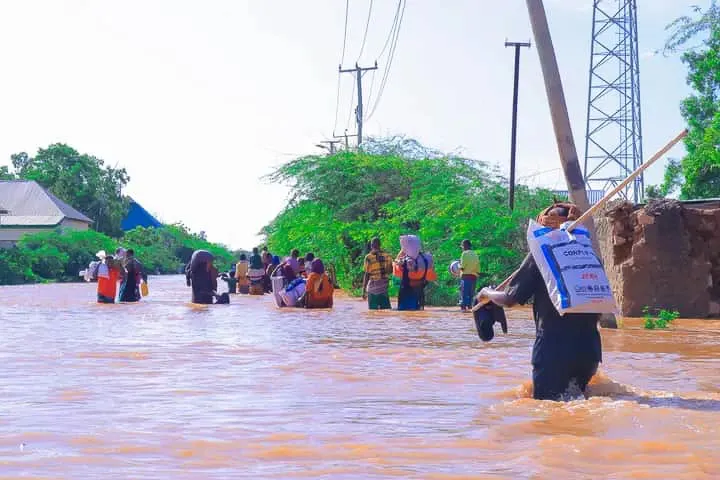After five consecutive failed rainy seasons, rain finally began to fall in early October.
But within weeks, the seasonal rainfall became a series of flash floods, and now, what had been a devastating drought is a “once-in-a-century” disaster.

A road submerged under water in Baidoa following heavy rains. Photo: CARE International
A road submerged under water in Baidoa following heavy rains. Photo: CARE International
After five consecutive failed rainy seasons, rain finally began to fall in early October.
But within weeks, the seasonal rainfall became a series of flash floods, and now, what had been a devastating drought is a “once-in-a-century” disaster.
The United Nations reports 1.2 million people have already been affected by the floods, hundreds of thousands losing their livelihoods, homes, and access to clean water, health centers, and food.
“The toll of the floods is compounded by the fact that the communities most affected were also impacted by the drought,” said Ummkalthum Dubow, CARE’s Country Director in Somalia.
“Now, we are particularly concerned about the impact the floods pose on women and girls.”

The UN reports that over 83 per cent of the affected homes are female-led households, which is especially concerning in light of CARE’s recent Climate Change is Sexist campaign that showed how climate-fueled disasters like this exacerbate gender-based violence (GBV).
CARE research has also shown the impacts of climate change in regions like Somalia have forced girls to drop out of school, putting them at risk of harmful traditional practices such as early marriage and Female Genital Mutilation (FGM).
“Women and girls are now exposed to higher risks due to a lack of adequate shelter, limited health services, and exposure to harsh weather,” Dubow said.
“Education has been disrupted in many places, including some of the CARE-supported schools. Floods have destroyed classrooms and washed away learning materials. Access to healthcare facilities has been disrupted as roads are submerged.”
The damage to sanitation facilities and pools of stagnant water has also led to an increased risk of waterborne diseases, which could, in turn, have a wider impact on malnutrition, morbidity, and mortality, particularly among children, pregnant women, and other vulnerable populations.

More rain is expected in the coming days, with the forecast for the next week showing very heavy to extremely heavy rainfall in southern Somalia, as well as wetter than usual conditions in central and southern Somalia.
Tragically, this is what the future could look like if global leaders don’t take stronger action to stop the climate crisis.
“Globally, 2023 is characterized by highly worrying temperature records and weather disasters, which are already making living conditions massively difficult for many people,” Sven Harmeling, Climate Policy Lead at CARE International, said.
“The El Niño weather phenomenon is also expected to cause massive rainfall in the Horn of Africa in the next few months, which could lead to further severe destruction.”
Since the start of the flooding, CARE has distributed cash to those impacted and reached more than 48,000 people in South Central and Puntland.
In addition, CARE is in the process of targeting another 48,000 individuals through mobile money cash disbursements. Plans are also underway to scale up responses to address the worsening humanitarian situation through the delivery of clean water, healthcare, nutrition, and protection support for women and girls.
“We are calling upon the international community to provide urgent funding to save lives and livelihoods in Somalia,” Dubow said. “The time to make a difference for affected communities is now.”
To learn more about CARE’s work in Somalia, visit the “Where We Work” page here.